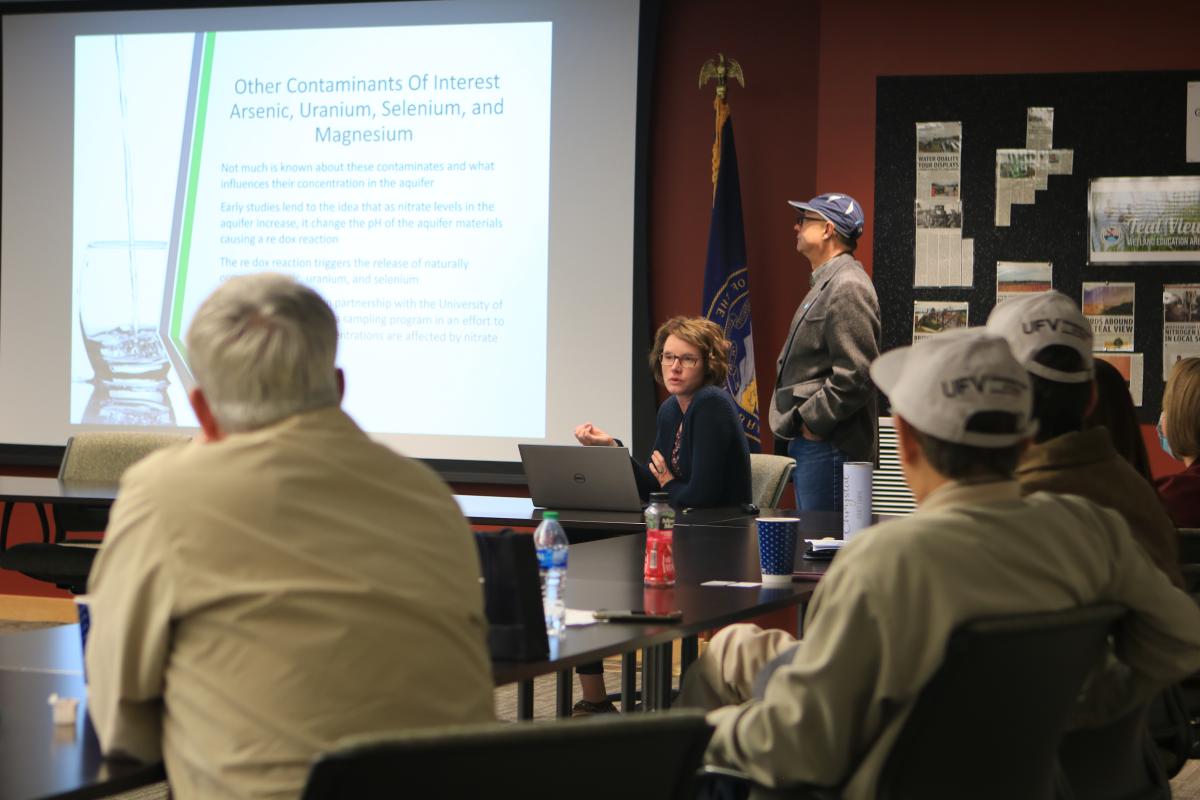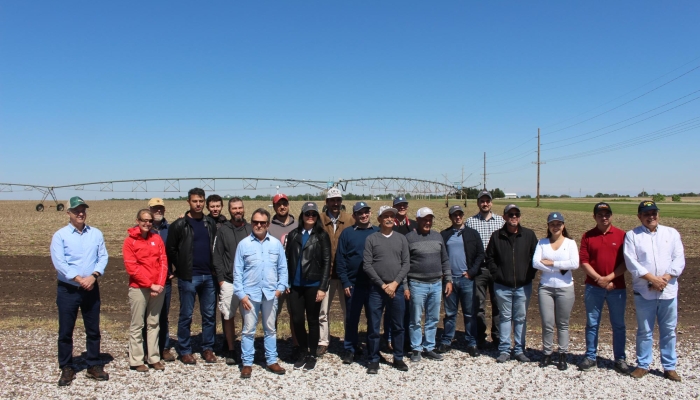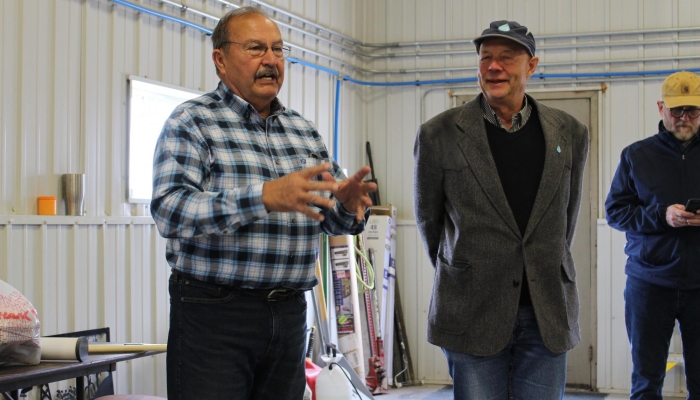Local control, local solutions, global mindset
Brazilian delegation visits Nebraska to learn about water resource management
How do Nebraskans manage water resources? What are the agricultural and environmental challenges in the state regarding water quality and quantity? And what can key decision makers from other heavily agricultural regions of the world learn from the way things are done here?
These questions and others were explored recently as a group from Mato Grosso, Brazil, visited Nebraska for a week of learning and networking. The group of more than 20 state government secretaries and technical staff, farmer association members, university scientists, and others involved in agriculture were hosted by the Daugherty Water for Food Global Institute (DWFI) at the University of Nebraska. During their visit to the Cornhusker State, the delegation spent a day in the Upper Big Blue Natural Resources District, meeting with NRD staff as well as district producers to get a closer look at the realities of water use in the state.
Nebraska’s NRD system is unique within the United States. The local control of 23 natural resources districts all working in the same 12 areas of responsibility, paired with data-driven leadership from state agencies, makes Nebraska a useful case study for other states and countries. The group from Brazil had many questions about drought and allocation regulations, irrigation efficiency advancements, and water quality concerns including nitrates. Marie Krausnick, assistant general manager of the Upper Big Blue NRD, presented to the highly engaged consortium and answered questions about how decisions are made at the state and local level to address water quality and quantity challenges.
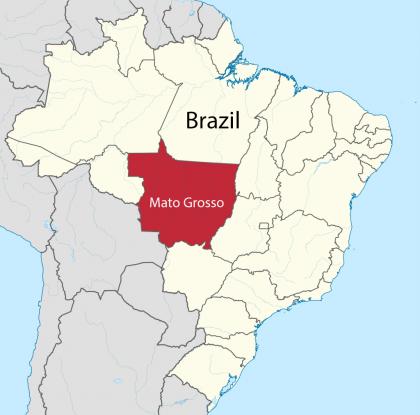 Nebraska has about 9 million acres of irrigated cropland; 1.2 million of those irrigated acres are in the Upper Big Blue NRD area, which is the district with the greatest amount of groundwater irrigated acres in the state. Like Nebraska, Mato Grosso producers raise mostly corn and soybeans, with the addition of cotton, dry beans, and pulses. Due to the warmer climate in Brazil, many producers are able to raise two to three harvests per year, as long as there is adequate irrigation. The group from Brazil was interested to learn more about how Nebraska has managed water resources through periods of drought when the needs of irrigators continues to increase.
Nebraska has about 9 million acres of irrigated cropland; 1.2 million of those irrigated acres are in the Upper Big Blue NRD area, which is the district with the greatest amount of groundwater irrigated acres in the state. Like Nebraska, Mato Grosso producers raise mostly corn and soybeans, with the addition of cotton, dry beans, and pulses. Due to the warmer climate in Brazil, many producers are able to raise two to three harvests per year, as long as there is adequate irrigation. The group from Brazil was interested to learn more about how Nebraska has managed water resources through periods of drought when the needs of irrigators continues to increase.
The farm of Jerry and Susan Stahr in York County gave the group a first-hand look at how data, policy, and NRD programs translate into action at the individual field level. Jerry presented to the group on a wide-range of topics, from the added efficiencies provided by chemigation and soil moisture probes, to the on-farm research projects he has participated in for years that have informed his tillage and fertilizer practices. The Stahrs have farmed a section of ground east of York for more than 40 years, including a variety of row crops and livestock. Jerry proudly pointed out the latest addition to their farming operation: a solar panel array that will provide electricity to their farmstead. They have sought to create continuous improvement to the land, as Jerry feels deeply that his successful stewardship of natural resources is a gift he is responsible for passing on to the couple’s 11 (soon to be 12) grandchildren.
Jerry Stahr displays soil moisture probes while Christopher Neale explains their use in Portuguese to the group from Brazil.
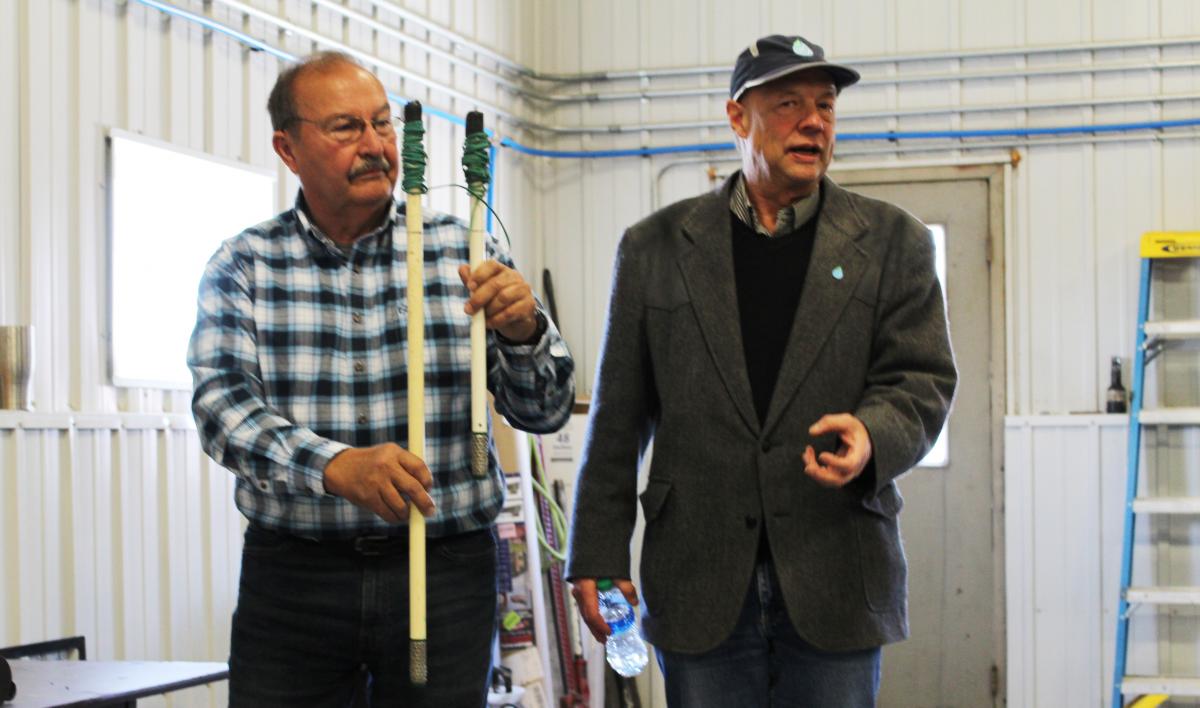
This is not the first time that Jerry has presented to international delegations with the partnership of DWFI. Over the years, several other groups with the institute have visited his farm to hear about his approach to agriculture and conservation. In 2018 he traveled to Brazil to speak at conference on these topics, as well.
Brothers Brandon and Zachary Hunnicutt farm a variety of row crops on more than 2,000 acres in Hamilton County near Giltner. Like the Stahrs, the Hunnicutts are serious about stewardship and excited about the opportunities to improve the sustainability of their farm by implementing conservation practices working closely with Jenny Rees, UNL extension educator. The Hunnicutts have been part of a three-year study with the Upper Big Blue NRD, Nebraska Extension, and the Nature Conservancy to test the viability of seeding cover crops between corn and soybean rows post emergence in the spring, rather than the traditional post-harvest cover crop application in the fall. Brandon told the group from Brazil about the positive impact their farm has witnessed with the addition of cover crops, including the increase in soil organic matter that improves the moisture holding capacity of the soil. Some people think cover crops will take too much moisture from the field and affect the crop, however Brandon says that in his experience, soil moisture readings are consistently higher where there are cover crops. The Hunnicutts also showed the group from Brazil their autonomous center pivots, which are equipped with ground penetrating radar that can calculate soil moisture and determine when irrigation is needed.
Brandon Hunnicutt addresses the group with the farm's autonomous center pivot technology in the background.
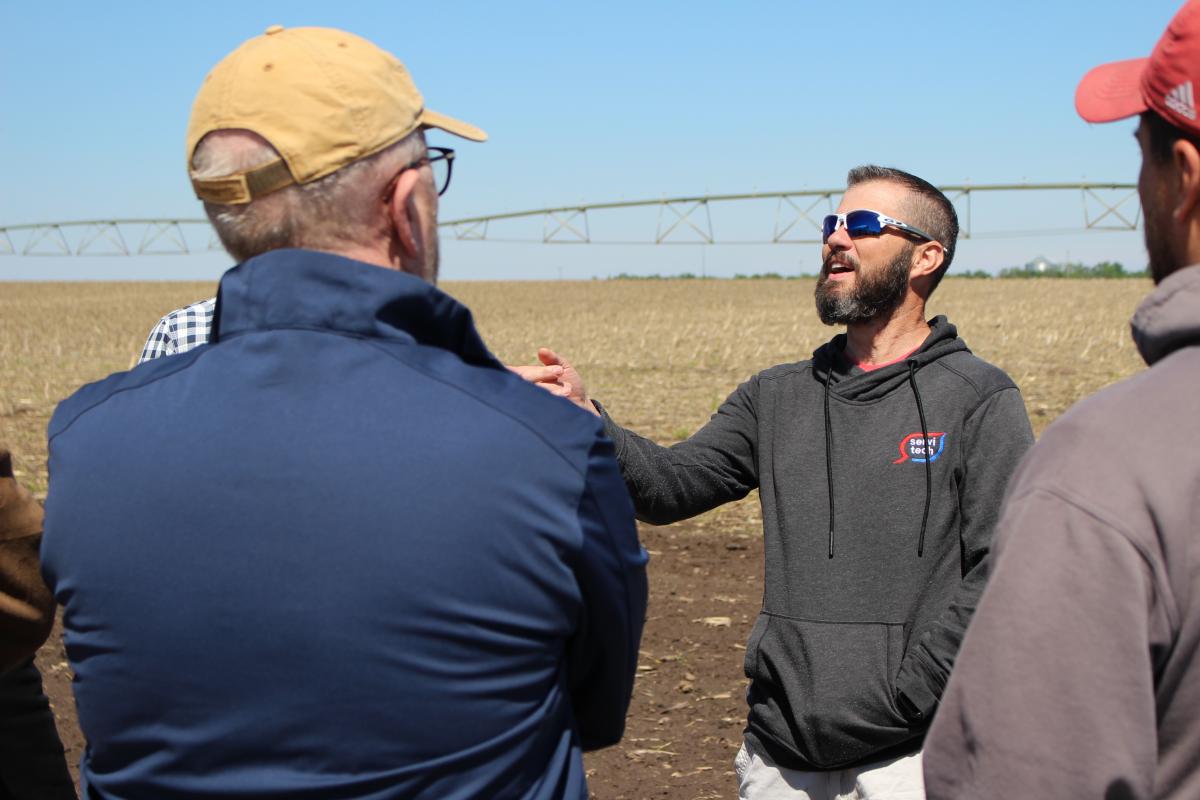
The delegation from Brazil was very appreciative of their hosts in Nebraska and the willingness of NRD staff as well as local producers to shine a light on the challenges and solutions faced by those who manage water in the state. According to DWFI’s website, every day, nearly a billion people in the world are food-insecure, without enough safe and nutritious food to lead healthy and active lives. Many of them are also water-insecure, without reliable access to an adequate amount of clean water to meet their needs. By 2050, the global food demand will double to meet the needs of nearly 10 billion people. To ensure sustainable food and water security in the face of population and income increases, a changing climate, and the growing demand for scarce water resources, it is imperative to improve water management in agricultural and food systems.
Dr. Christopher Neale, director of research at DWFI and professor of biological systems engineering at the University of Nebraska–Lincoln, acted as host and interpreter for the group from Brazil during their visit to Nebraska. In thanking the NRD staff and district producers, Neale expressed the importance of these kinds of learning opportunities. “Nebraska has a unique way of managing its water. Sharing what we have learned here in Nebraska helps others around the world increase their agricultural productivity, while still protecting important water resources and the environment.”
“We were pleased to host this group from Mato Grosso and discuss the strategies of Nebraska’s NRDs,” said David Eigenberg, general manager of the Upper Big Blue NRD. “Research partners like UNL Extension, the Nebraska Water Center, and the Daugherty Water for Food Global Institute are important to the work of the NRDs and to the continued successful management of our state’s abundant water resources.”
Marie Krausnick (NRD) presents to the group about water quality concerns in Nebraska
